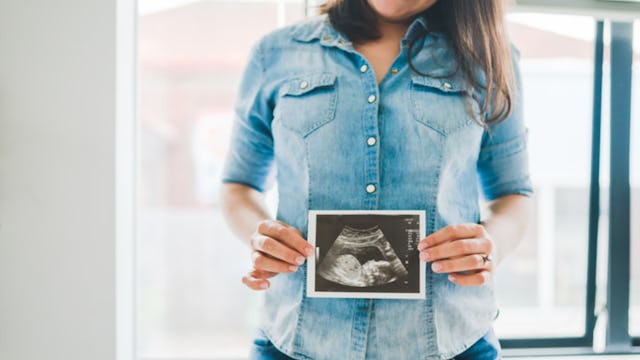Why American Women Are Having Fewer Children Than Their Hearts Desire

When I was a little girl, I dreamed about becoming a mother. Like many little girls, I lovingly doted on my baby dolls, taking them along wherever I went. At night, I swaddled them tightly before placing them gently in their bed, knowing one day it would all be real.
My thoughts on motherhood evolved as I grew. When I outgrew dolls, I began to fantasize about how many children I would have and what I would name them. I doodled their names in my journals and composition books. By high school, I’d settled on the idea that I’d have four kids, two of which would be twin boys I would name Dylan and Dalton.
As you can probably imagine, things changed between then and now—nearly 20 years later. I don’t have four children like I’d dreamed all those years ago. I have two beautiful kids—a boy and a girl. Truth be told, I’d like one more, but I don’t think it will happen. Actually, in my heart of hearts, I know it won’t.
I’m not the only mother who’s made peace with a smaller family than what her heart desires. In fact, in recent years, fertility rates—an estimate of how many children the average women will have during her child-bearing years—have steadily fallen across the nation. The most recent data from the Center for Disease Control and Prevention shows a decrease of 16.4 percent from 2007 to 2017. With average fertility rates dropping from 2.12 births per woman to 1.77 births per woman.
I know what you’re thinking—women can’t have 1.77 babies—and you’d be correct, but since these numbers are an average of all women during their child-bearing years, this decrease is still extremely significant.
There are many reasons for the declining numbers. Some point to smaller scale reasons for the decline in fertility rates, such as couples having less sex, decreased face-to-face interaction due to cellphone usage and screen time, and greater access to pornography. While a larger, seemingly more obvious, reason is that people are waiting longer to have children. Millennials specifically aren’t coupling up as early as previous generations. The average age of a woman’s first birth in the United States is 26 years old, and will likely continue to rise according to recent trends. This means fertility rates will likely continue to fall.
Another contributing factor is the decrease in teen pregnancies, which have steadily declined, as well as birth rates of mothers in their early 20s. This is largely thanks to long-acting reversible contraceptives, like IUDs, and the availability of emergency contraceptives—both of which prevent unwanted or unintended pregnancies. For the most part, this seems like a good thing, right? People who don’t want to have kids aren’t having kids.
Well, these prevented, unwanted pregnancies are only part of the decrease in fertility rates. The other portion comes from those who want to become parents, but aren’t able to conceive. While technologies such as in vitro fertilization, ovulation-enhancing medicines, egg storage and artificial insemination have been available for years, they are out of budget for most people, with costs exceeding several thousand dollars for one attempt of a simple-assistive procedure. Prices climb significantly for more involved procedures and additional attempts, which are rarely, if ever, covered by insurance.
For mothers like me, the lack of adequate maternity leave, rising cost of quality childcare, and medical costs associated with having and raising a child carry heavy weight in my decision. Bottom line: though many want to become parents, and the technology is there for those that need assistance, people can’t afford it. Our ability to prevent unwanted pregnancies is out-pacing our ability to achieve desired pregnancies, which is evident in the widening gap between the number of children a mother reports wanting (2.7), and the number of children she will ultimately have (1.8).
Regardless of the reasons, millennials will likely be one of the first generations in a long time to achieve fewer pregnancies—have fewer children—than their hearts truly desire.
This article was originally published on